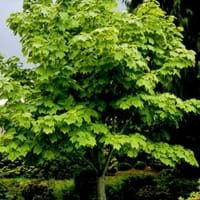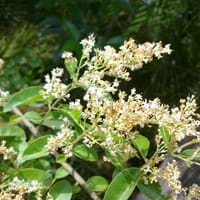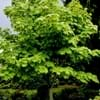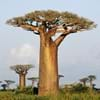Life Span
Perennial
Perennial
Type
Tree
Broadleaf Evergreen
Origin
Northeastern United States, Mid-Atlantic United States, Southeastern United States, Canada
China
Types
Not Available
Ligustrum sinense concavum, Ligustrum sinense coryanum, Ligustrum sinense dissimile
Number of Varieties
Not Available
Habitat
moist forests, Slopes
Not Available
USDA Hardiness Zone
3-7
8-10
AHS Heat Zone
7-1
Not Available
Sunset Zone
Not Available
21,22
Habit
Upright/Erect
Upright/Erect
Flower Color
Yellow, Yellow green
White
Flower Color Modifier
Bicolor
Bicolor
Fruit Color
Green, Brown
Dark Blue, Black
Leaf Color in Spring
Light Green
Dark Green
Leaf Color in Summer
Green
Dark Green
Leaf Color in Fall
Yellow
Dark Green
Leaf Color in Winter
Not Available
Dark Green
Leaf Shape
Maple shaped
Ovate
Plant Season
Not Available
Spring, Summer, Fall, Winter
Sunlight
Partial Sun, Partial shade
Full Sun, Partial Sun, Partial shade
Growth Rate
Fast
Very Fast
Type of Soil
Loam
Loam, Sand
The pH of Soil
Acidic, Neutral
Acidic, Neutral, Alkaline
Soil Drainage
Well drained
Average
Bloom Time
Early Spring, Spring
Summer
Tolerances
Not Available
Pollution, Drought, Salt
Where to Plant?
Ground
Ground
How to Plant?
Layering, Seedlings, Stem Cutting
Cuttings
Plant Maintenance
Medium
Medium
Watering Requirements
Requires regular watering
Keep the ground moist but not water-logged
In Summer
Lots of watering
Lots of watering
In Spring
Moderate
Moderate
In Winter
Average Water
Average Water
Soil pH
Acidic, Neutral
Acidic, Neutral, Alkaline
Soil Type
Loam
Loam, Sand
Soil Drainage Capacity
Well drained
Average
Sun Exposure
Partial Sun, Partial shade
Full Sun, Partial Sun, Partial shade
Pruning
Prune if you want to improve plant shape
Prune in spring
Fertilizers
All-Purpose Liquid Fertilizer
Fertilize just before the growing season begins
Pests and Diseases
Anthracnose, Bacterial leaf scorch, Bleeding canker, Decline, Fomes root rot, Ganoderma root rot, Laetiporus root rot, Leaf spot, Powdery mildew, Red blotch, Tar spot, Verticillium Wilt
Not Available
Plant Tolerance
Drought
Drought, Pollution, Salt
Flowers
Insignificant
Showy
Flower Petal Number
Single
Single
Foliage Texture
Coarse
Medium
Foliage Sheen
Matte
Glossy
Attracts
Not Available
Birds
Allergy
Asthma, Runny nose, Skin irritation
Not Available
Aesthetic Uses
Showy Purposes
Showy Purposes, small hedge
Beauty Benefits
Not Available
Not Available
Environmental Uses
Air purification
Air purification
Medicinal Uses
Antirheumatic, Cold, Cough, Emetic, gonorrhoea, Kidney problems, Pectoral, Swelling, Vomiting
Not Available
Part of Plant Used
Leaves, Sap
Whole plant
Other Uses
Used as Ornamental plant, Used as preservative
Used as Ornamental plant
Used As Indoor Plant
No
No
Used As Outdoor Plant
Yes
Yes
Garden Design
Feature Plant
Feature Plant, Hedges, Screening, Wind Break, Street Trees
Botanical Name
ACER pensylvanicum
Ligustrum sinense
Common Name
Moosewood, striped maple, moose maple
Chinese privet
In Hindi
धारीदार मेपल
Chinese privet
In German
gestreifte Ahorn
Chinesischer Liguster
In French
érable rayé
Chinese privet
In Spanish
arce rayado
aligustrina, ligustrina, ligustrín, o aligustre
In Greek
ριγέ σφενδάμου
Κινέζοι privet
In Portuguese
plátano listrada
Ligustrina
In Polish
paski klonu
Chiński ligustr
In Latin
alba acernis
Chinese privet
Phylum
Magnoliophyta
Magnoliophyta
Class
Magnoliopsida
Magnoliopsida
Order
Sapindales
Scrophulariales
Family
Aceraceae
Oleaceae
Clade
Angiosperms, Eudicots, Rosids
Angiosperms, Asterids, Eudicots
Tribe
Not Available
Oleeae
Subfamily
Not Available
Not Available
Number of Species
Not Available
Properties of Moosewood Tree and Chinese Privet
Wondering what are the properties of Moosewood Tree and Chinese Privet? We provide you with everything About Moosewood Tree and Chinese Privet. Moosewood Tree doesn't have thorns and Chinese Privet doesn't have thorns. Also Moosewood Tree does not have fragrant flowers. Moosewood Tree has allergic reactions like Asthma, Runny nose and Skin irritation and Chinese Privet has allergic reactions like Asthma, Runny nose and Skin irritation. Compare all the properties and characteristics of these two plants. Find out which of these plant can be used as indoor plant. If you are interested to decorate your house and garden, find out aesthetic uses, compare them and select the plant which will beautify your surrounding. Along with beautification, try comparing medicinal and edible uses of Moosewood Tree and Chinese Privet and you can choose the plant having best and most benefits.
Season and Care of Moosewood Tree and Chinese Privet
Season and care of Moosewood Tree and Chinese Privet is important to know. While considering everything about Moosewood Tree and Chinese Privet Care, growing season is an essential factor. Moosewood Tree season is Not Available and Chinese Privet season is Not Available. The type of soil for Moosewood Tree is Loam and for Chinese Privet is Loam, Sand while the PH of soil for Moosewood Tree is Acidic, Neutral and for Chinese Privet is Acidic, Neutral, Alkaline.
Moosewood Tree and Chinese Privet Physical Information
Moosewood Tree and Chinese Privet physical information is very important for comparison. Moosewood Tree height is 610.00 cm and width 460.00 cm whereas Chinese Privet height is 460.00 cm and width 300.00 cm. The color specification of Moosewood Tree and Chinese Privet are as follows:
Moosewood Tree flower color: Yellow and Yellow green
Moosewood Tree leaf color: Light Green
Chinese Privet flower color: White
- Chinese Privet leaf color: Dark Green
Care of Moosewood Tree and Chinese Privet
Care of Moosewood Tree and Chinese Privet include pruning, fertilizers, watering etc. Moosewood Tree pruning is done Prune if you want to improve plant shape and Chinese Privet pruning is done Prune in spring. In summer Moosewood Tree needs Lots of watering and in winter, it needs Average Water. Whereas, in summer Chinese Privet needs Lots of watering and in winter, it needs Average Water.





